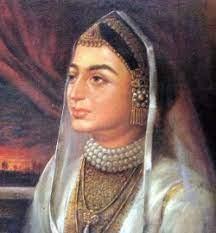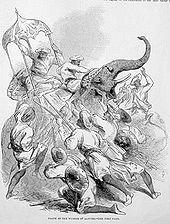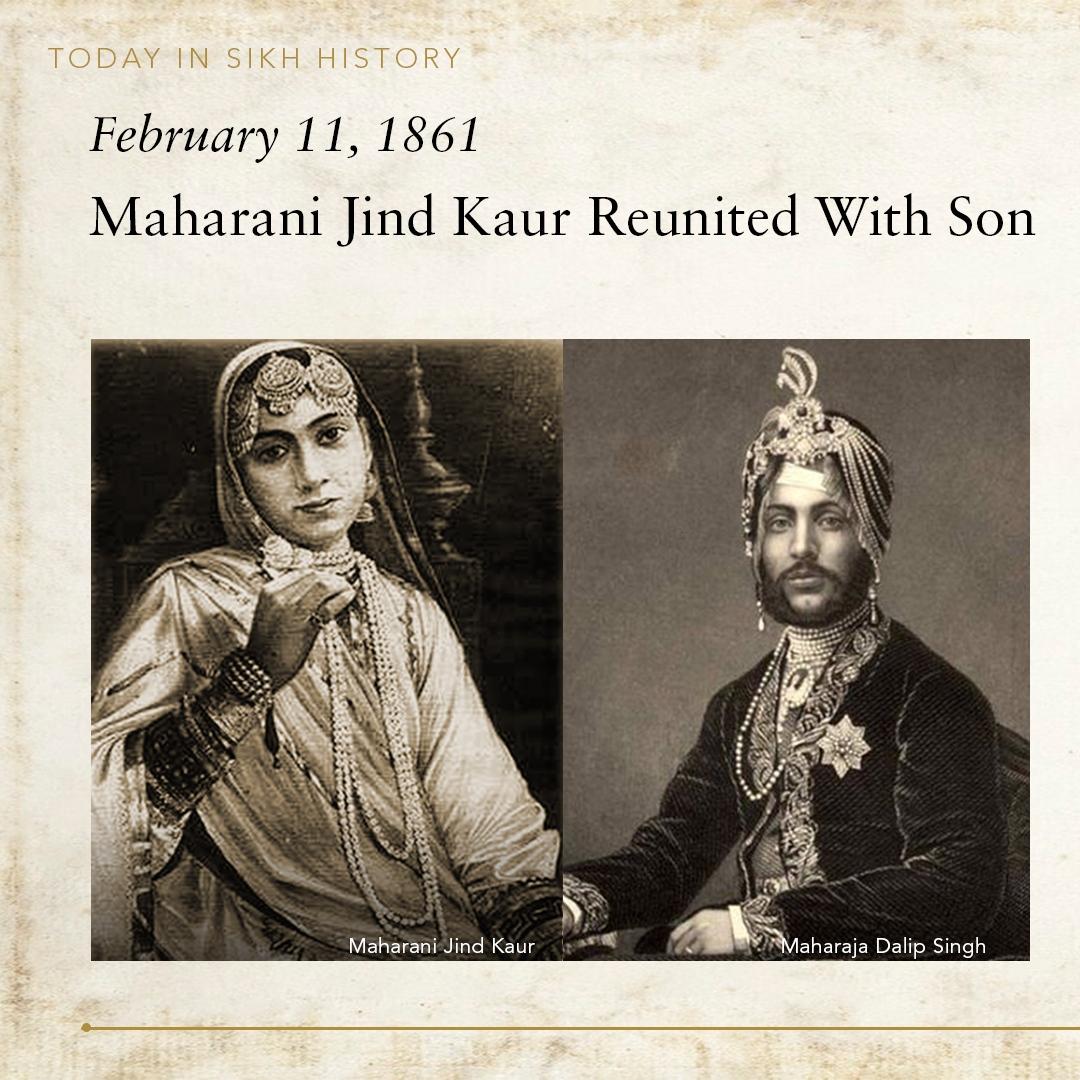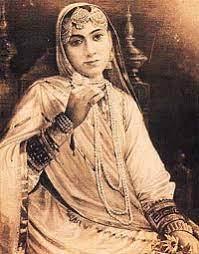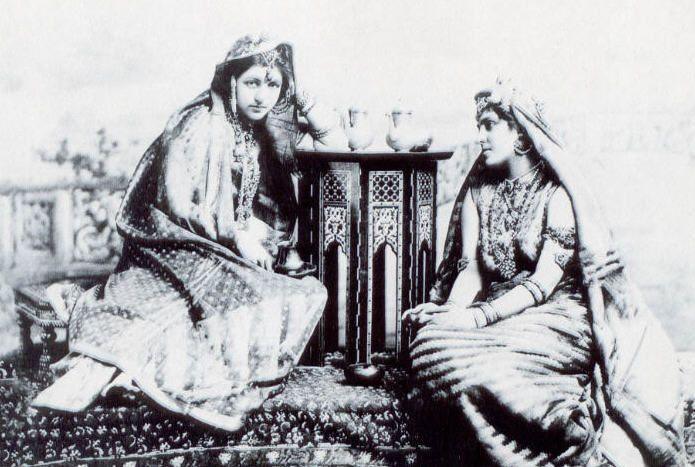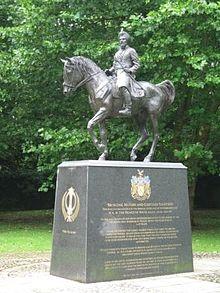-
3 людям нравится это
-
0 Записей
-
0 Фото
-
0 Видео
-
History and Facts
© 2025 Omaada - A global social and professionals networking platform
 Russian
Russian
Недавние обновления
-
Reunion and final years:
In November 1856 Jung Bahadur Rana sent the Governor-General of India a letter which he had intercepted from Duleep Singh to Jind Kaur, suggesting that she come to England. The letter was dismissed as a forgery. However, shortly afterwards Duleep Singh commissioned Pundit Nehemiah Goreh to visit Kathmandu on his behalf and find out how his mother was managing. This attempt was also doomed to failure and the Pundit was forbidden to contact the Maharani. Duleep Singh then decided to go himself, using the pretext of a tiger shoot in Bengal. In 1860 he wrote to the British Resident in Kathmandu, enclosing his letter in one from Sir John Login so that it would not be intercepted or dismissed as a forgery. The Resident reported that the Rani had 'much changed, was blind and had lost much of the energy which formerly characterised her.' The British decided that she was no longer a threat and on 16 January 1861 she was permitted to join her son at Spence's Hotel, in Calcutta. At the time several Sikh regiments were returning home via Calcutta at the end of the Chinese war. The presence of Sikh royalty in the city gave rise to demonstrations of joy and loyalty. The hotel was surrounded by thousands of armed Sikhs and the Governor-General, Lord Canning, requested Duleep Singh, as a favour, to leave for England with his mother by the next boat.
During the passage to England, Duleep Singh wrote to Sir John Login, who had been his guardian throughout his adolescence in British hands, asking him to find a house for his mother near Lancaster Gate. Soon after her arrival, Lady Login visited with her three youngest children. She had heard tales of the Maharani's beauty and influence and strength of will and was curious to meet the woman who had wielded such power. Her compassion was aroused when she met a tired half-blind woman, her health broken and her beauty vanished. "Yet the moment she grew interested and excited in a subject, unexpected gleams and glimpses through the haze of indifference and the torpor of advancing age revealed the shrewd and plotting brain of her, who had once been known as the 'Messalina of the Punjab'."
While in India Duleep Singh had negotiated the return of the Maharani's jewellery, which had been kept in the treasury at Benares. These arrived at Lancaster Gate just before the Maharani returned Lady Login's visit, and her delight was so great that "she forthwith decorated herself, and her attendants, with an assortment of the most wonderful necklaces and earrings, strings of lovely pearls and emeralds", to wear during the visit. The portrait of the Maharani by George Richmond shows her wearing some of the jewels, including the emerald and pearl necklace, which was sold by auction on 8 October 2009 at Bonhams for £55,200.Reunion and final years: In November 1856 Jung Bahadur Rana sent the Governor-General of India a letter which he had intercepted from Duleep Singh to Jind Kaur, suggesting that she come to England. The letter was dismissed as a forgery. However, shortly afterwards Duleep Singh commissioned Pundit Nehemiah Goreh to visit Kathmandu on his behalf and find out how his mother was managing. This attempt was also doomed to failure and the Pundit was forbidden to contact the Maharani. Duleep Singh then decided to go himself, using the pretext of a tiger shoot in Bengal. In 1860 he wrote to the British Resident in Kathmandu, enclosing his letter in one from Sir John Login so that it would not be intercepted or dismissed as a forgery. The Resident reported that the Rani had 'much changed, was blind and had lost much of the energy which formerly characterised her.' The British decided that she was no longer a threat and on 16 January 1861 she was permitted to join her son at Spence's Hotel, in Calcutta. At the time several Sikh regiments were returning home via Calcutta at the end of the Chinese war. The presence of Sikh royalty in the city gave rise to demonstrations of joy and loyalty. The hotel was surrounded by thousands of armed Sikhs and the Governor-General, Lord Canning, requested Duleep Singh, as a favour, to leave for England with his mother by the next boat. During the passage to England, Duleep Singh wrote to Sir John Login, who had been his guardian throughout his adolescence in British hands, asking him to find a house for his mother near Lancaster Gate. Soon after her arrival, Lady Login visited with her three youngest children. She had heard tales of the Maharani's beauty and influence and strength of will and was curious to meet the woman who had wielded such power. Her compassion was aroused when she met a tired half-blind woman, her health broken and her beauty vanished. "Yet the moment she grew interested and excited in a subject, unexpected gleams and glimpses through the haze of indifference and the torpor of advancing age revealed the shrewd and plotting brain of her, who had once been known as the 'Messalina of the Punjab'." While in India Duleep Singh had negotiated the return of the Maharani's jewellery, which had been kept in the treasury at Benares. These arrived at Lancaster Gate just before the Maharani returned Lady Login's visit, and her delight was so great that "she forthwith decorated herself, and her attendants, with an assortment of the most wonderful necklaces and earrings, strings of lovely pearls and emeralds", to wear during the visit. The portrait of the Maharani by George Richmond shows her wearing some of the jewels, including the emerald and pearl necklace, which was sold by auction on 8 October 2009 at Bonhams for £55,200.0 Комментарии 0 Поделились 0 предпросмотрВойдите, чтобы отмечать, делиться и комментировать! -
Exile in Nepal Of Jind Kaur:
The mid-19th century was a time of great political upheaval in the Indian subcontinent with expanding British power. Noting the common adversary in the British, Nepal's Prime Minister Bhimsen Thapa and Maharaja Ranjit Singh forged a secret alliance against the British. However, Maharaja Ranjit Singh died suddenly in 1839 and the Sikh Kingdom started to disintegrate.
Rani Jind Kaur became the regent in 1843, as her son King Duleep Singh was still an infant. Led by her, Punjab went to war with the British in 1845. Lahore sent for help to Kathmandu, but the court in Kathmandu was divided and King Rajendra Bikram Shah did not respond positively.
Following Punjab's annexation, the British imprisoned the Rani in Chunnar fort near Varanasi. However, two years later in 1849, she managed to escape from the fort disguised as a maid and traveled 800 km north to reach Kathmandu. Initially, she stayed at the residence of Amar Bikram Shah, son of General Chautariya Pushkar Shah, who had been Nepal's Prime Minister in 1838-39. Amar Bikram Shah's residence in the Narayanhiti area provided her with the facilities and dignity offered to royalty. But whenever outsiders came, she would disguise herself and was introduced as a “maid from Hindusthan”. “Rani Jind Kaur had chosen to stay at Amar Bikram Shah's residence because Chautariya Pushkar Shah was one of the key officials engaged in forging an alliance between Nepal and Punjab against the British when Maharaja Ranjit Singh was alive. She stayed in Amar Bikram Shah's house for a few months before she decided to come out of her hiding and approach the then Prime Minister Jung Bahadur Rana.
The Rani was given asylum by the Prime Minister of Nepal and Jung Bahadur Rana with full dignity as a Queen consort of Maharaja Ranjit Singh. A brand new residence, Charburja Durbar, was built in the Thapathali durbar complex and an allowance was set by the Nepali government. The British Resident in Kathmandu kept an eye on her, believing that she was still intriguing to revive the Sikh dynasty. She lived in Nepal for 11 years.Exile in Nepal Of Jind Kaur: The mid-19th century was a time of great political upheaval in the Indian subcontinent with expanding British power. Noting the common adversary in the British, Nepal's Prime Minister Bhimsen Thapa and Maharaja Ranjit Singh forged a secret alliance against the British. However, Maharaja Ranjit Singh died suddenly in 1839 and the Sikh Kingdom started to disintegrate. Rani Jind Kaur became the regent in 1843, as her son King Duleep Singh was still an infant. Led by her, Punjab went to war with the British in 1845. Lahore sent for help to Kathmandu, but the court in Kathmandu was divided and King Rajendra Bikram Shah did not respond positively. Following Punjab's annexation, the British imprisoned the Rani in Chunnar fort near Varanasi. However, two years later in 1849, she managed to escape from the fort disguised as a maid and traveled 800 km north to reach Kathmandu. Initially, she stayed at the residence of Amar Bikram Shah, son of General Chautariya Pushkar Shah, who had been Nepal's Prime Minister in 1838-39. Amar Bikram Shah's residence in the Narayanhiti area provided her with the facilities and dignity offered to royalty. But whenever outsiders came, she would disguise herself and was introduced as a “maid from Hindusthan”. “Rani Jind Kaur had chosen to stay at Amar Bikram Shah's residence because Chautariya Pushkar Shah was one of the key officials engaged in forging an alliance between Nepal and Punjab against the British when Maharaja Ranjit Singh was alive. She stayed in Amar Bikram Shah's house for a few months before she decided to come out of her hiding and approach the then Prime Minister Jung Bahadur Rana. The Rani was given asylum by the Prime Minister of Nepal and Jung Bahadur Rana with full dignity as a Queen consort of Maharaja Ranjit Singh. A brand new residence, Charburja Durbar, was built in the Thapathali durbar complex and an allowance was set by the Nepali government. The British Resident in Kathmandu kept an eye on her, believing that she was still intriguing to revive the Sikh dynasty. She lived in Nepal for 11 years.0 Комментарии 0 Поделились 0 предпросмотр -
Imprisonment:
After the war the British rewarded the leaders who had helped them, including Lal Singh and Tej Singh. However, the Sikh commanders were seething at what they saw as his treachery. When in August 1847 Duleep Singh refused to invest Tej Singh as Raja of Sialkot, the British Resident, Henry Lawrence, imprisoned the Maharani in the Samman Tower of the Lahore Fort and, ten days later, moved her to the fortress in Sheikhupura and reduced her pension to 48,000 rupees. The bitterest blow to the Maharani was the separation from her 9-year-old son. She wrote to Lawrence imploring him to return Duleep to her. "He has no sister, no brother. He has no uncle, senior or junior. His father he has lost. To whose care has he been entrusted?" She did not see her son again for thirteen and a half years.
The following year, the new British Resident, Sir Frederick Currie, described her as "the rallying point of rebellion" and exiled her from Punjab. She was taken to the Chunar Fort, about 45 km from Varanesi, and her jewellery was taken from her. Her treatment by the two Residents caused deep resentment among Sikhs. The Muslim ruler of neighbouring Afghanistan, Dost Mohammad Khan, protested that such treatment is objectionable to all creeds.
A year later she escaped from the Chunar Fort, disguised as a servant, and travelled through 800 miles of forest to ask for sanctuary in Nepal. She arrived at Kathmandu on April 1849.Imprisonment: After the war the British rewarded the leaders who had helped them, including Lal Singh and Tej Singh. However, the Sikh commanders were seething at what they saw as his treachery. When in August 1847 Duleep Singh refused to invest Tej Singh as Raja of Sialkot, the British Resident, Henry Lawrence, imprisoned the Maharani in the Samman Tower of the Lahore Fort and, ten days later, moved her to the fortress in Sheikhupura and reduced her pension to 48,000 rupees. The bitterest blow to the Maharani was the separation from her 9-year-old son. She wrote to Lawrence imploring him to return Duleep to her. "He has no sister, no brother. He has no uncle, senior or junior. His father he has lost. To whose care has he been entrusted?" She did not see her son again for thirteen and a half years. The following year, the new British Resident, Sir Frederick Currie, described her as "the rallying point of rebellion" and exiled her from Punjab. She was taken to the Chunar Fort, about 45 km from Varanesi, and her jewellery was taken from her. Her treatment by the two Residents caused deep resentment among Sikhs. The Muslim ruler of neighbouring Afghanistan, Dost Mohammad Khan, protested that such treatment is objectionable to all creeds. A year later she escaped from the Chunar Fort, disguised as a servant, and travelled through 800 miles of forest to ask for sanctuary in Nepal. She arrived at Kathmandu on April 1849.0 Комментарии 0 Поделились 0 предпросмотр -
Regency Of Jind Kaur:
After the death of Ranjit Singh, Jind Kaur and her son lived in relative obscurity under the care of Raja Dhian Siṅgh at Jammu that was governed by his brother Gulab Singh. On 16 September 1843, after the assassination of Maharaja Sher Singh and his wazir (vizier), the army proclaimed the 5-year-old Duleep Singh as sovereign. At first the new wazir, Hira Singh, took little notice of the young Maharaja and his mother. Jind Kaur became fiercely defensive of the rights of her son and pleaded with the regimental committees to protect his position asking 'who is the real sovereign, Duleep Singh or Hira Singh? If the former, then the Khālsā should ensure that he was not a king with an empty title.' The council supported her and she gradually became the symbol of sovereignty. She took control of the government with the approval of the army and cast off her veil. As Regent, she reconstituted the Supreme Council of the Khalsa and restored a balance between the army and the civil administration. She held court, transacted State business in public and reviewed and addressed the troops.
The young Maharani was faced with many problems. Pashaura Singh Kanvar, half brother of Duleep Singh, was seeking to replace Duleep Singh as Maharaja. The feudal chiefs wanted a reduction in the taxation imposed on them by Hira Singh and the restoration of their jagirs, land grants from which they received income. The army wanted an increase in pay. The cost of the civil and military administration had increased and Gulab Singh Dogra, Raja of Jammu and uncle of Hira Singh, had taken most of the Lahore Treasury. The power struggle between the various Sikh factions was continuing and some were secretly negotiating with the British East India Company forces amassing on the border.
In tackling these problems, the Maharani had the advice and support of the newly appointed council of elder statesmen and military leaders. To strengthen her power base, Jind Kaur betrothed Duleep Singh to the daughter of Chatar Singh Atarivala, the Governor of Hazara province and a powerful and influential member of the Sikh nobility. Army pay was increased. Gulab Singh was brought to Lahore to face charges of treachery and his nephew, Hira Singh, was replaced as wazir by Jawahar Singh. Gulab Singh was allowed to return to Jammu after paying a fine of 6,800,000 rupees (68 lakh) and promising future good behaviour.
Pashaura Singh arrived in Lahore in January 1845. He was received with honour but was persuaded to return to his estates by the army and a promise of an increase in his jagir. However, in July he took the fort at Attock and declared himself to be the ruler of the Punjab. A force commanded by Chatar Singh besieged the fort and forced him to surrender on the promise of a safe conduct. However Jawahar Singh had decided that he posed too great a risk to the young Maharaja and he was secretly taken back to Attock and strangled. For his involvement in this, Jawahar Singh was stabbed to death in front of his sister, the agonised Maharani.
On 13 December 1845 the British Governor-General, Sir Henry Hardinge, issued a proclamation declaring war on the Sikhs. The causes and conduct of the First Anglo-Sikh War are described fully elsewhere. The Sikhs lost the war, due, they claimed, to the treachery of their commander-in-chief, Lal Singh and Raja Tej Singh, who failed to attack when the British were at his mercy during the battle of Ferozeshah and later sank the Sikh bridge of boats in the battle of Sobraon. The terms of the Treaty of Lahore, signed in March 1846, were punitive but the seven-year-old Duleep Singh remained as Maharaja and Jind Kaur was to remain as regent. However, in December, she was replaced by a Council of Regency, controlled by a British Resident, and awarded an annual pension of 150,000 rupees.Regency Of Jind Kaur: After the death of Ranjit Singh, Jind Kaur and her son lived in relative obscurity under the care of Raja Dhian Siṅgh at Jammu that was governed by his brother Gulab Singh. On 16 September 1843, after the assassination of Maharaja Sher Singh and his wazir (vizier), the army proclaimed the 5-year-old Duleep Singh as sovereign. At first the new wazir, Hira Singh, took little notice of the young Maharaja and his mother. Jind Kaur became fiercely defensive of the rights of her son and pleaded with the regimental committees to protect his position asking 'who is the real sovereign, Duleep Singh or Hira Singh? If the former, then the Khālsā should ensure that he was not a king with an empty title.' The council supported her and she gradually became the symbol of sovereignty. She took control of the government with the approval of the army and cast off her veil. As Regent, she reconstituted the Supreme Council of the Khalsa and restored a balance between the army and the civil administration. She held court, transacted State business in public and reviewed and addressed the troops. The young Maharani was faced with many problems. Pashaura Singh Kanvar, half brother of Duleep Singh, was seeking to replace Duleep Singh as Maharaja. The feudal chiefs wanted a reduction in the taxation imposed on them by Hira Singh and the restoration of their jagirs, land grants from which they received income. The army wanted an increase in pay. The cost of the civil and military administration had increased and Gulab Singh Dogra, Raja of Jammu and uncle of Hira Singh, had taken most of the Lahore Treasury. The power struggle between the various Sikh factions was continuing and some were secretly negotiating with the British East India Company forces amassing on the border. In tackling these problems, the Maharani had the advice and support of the newly appointed council of elder statesmen and military leaders. To strengthen her power base, Jind Kaur betrothed Duleep Singh to the daughter of Chatar Singh Atarivala, the Governor of Hazara province and a powerful and influential member of the Sikh nobility. Army pay was increased. Gulab Singh was brought to Lahore to face charges of treachery and his nephew, Hira Singh, was replaced as wazir by Jawahar Singh. Gulab Singh was allowed to return to Jammu after paying a fine of 6,800,000 rupees (68 lakh) and promising future good behaviour. Pashaura Singh arrived in Lahore in January 1845. He was received with honour but was persuaded to return to his estates by the army and a promise of an increase in his jagir. However, in July he took the fort at Attock and declared himself to be the ruler of the Punjab. A force commanded by Chatar Singh besieged the fort and forced him to surrender on the promise of a safe conduct. However Jawahar Singh had decided that he posed too great a risk to the young Maharaja and he was secretly taken back to Attock and strangled. For his involvement in this, Jawahar Singh was stabbed to death in front of his sister, the agonised Maharani. On 13 December 1845 the British Governor-General, Sir Henry Hardinge, issued a proclamation declaring war on the Sikhs. The causes and conduct of the First Anglo-Sikh War are described fully elsewhere. The Sikhs lost the war, due, they claimed, to the treachery of their commander-in-chief, Lal Singh and Raja Tej Singh, who failed to attack when the British were at his mercy during the battle of Ferozeshah and later sank the Sikh bridge of boats in the battle of Sobraon. The terms of the Treaty of Lahore, signed in March 1846, were punitive but the seven-year-old Duleep Singh remained as Maharaja and Jind Kaur was to remain as regent. However, in December, she was replaced by a Council of Regency, controlled by a British Resident, and awarded an annual pension of 150,000 rupees.0 Комментарии 0 Поделились 0 предпросмотр -
Family Of Jind Kaur:
Jind Kaur Aulakh was born in Chachar, Gujranwala, the daughter of Manna Singh Aulakh, into an Aulakh Jat family the overseer of the royal kennels. She had an elder brother, Jawahar Singh Aulakh and an elder sister, who married Sardar Jawala Singh Padhania, the Chief of Padhana in the Lahore District. Manna Singh extolled Jind Kaur's beauty and virtues to Maharaja Ranjit Singh, who summoned and married her in 1835 by sending his 'arrow and sword' to the village. On 6 September 1838 she gave birth to her only child, Duleep Singh.
On 7 June 1864 her son Duleep Singh married Bamba Müller, daughter of Ludwig and Sofia Müller, by whom he had four sons, one of whom died in infancy, and three daughters. After the death of his first wife he married Ada Wetherill, daughter of Charles and Sarah Wetherill, and had two more daughters. All his children died without issue. One, by Duleep Singh's first marriage, Princess Sophia Alexandra Duleep Singh, was active in the suffragette movement in the United Kingdom.Family Of Jind Kaur: Jind Kaur Aulakh was born in Chachar, Gujranwala, the daughter of Manna Singh Aulakh, into an Aulakh Jat family the overseer of the royal kennels. She had an elder brother, Jawahar Singh Aulakh and an elder sister, who married Sardar Jawala Singh Padhania, the Chief of Padhana in the Lahore District. Manna Singh extolled Jind Kaur's beauty and virtues to Maharaja Ranjit Singh, who summoned and married her in 1835 by sending his 'arrow and sword' to the village. On 6 September 1838 she gave birth to her only child, Duleep Singh. On 7 June 1864 her son Duleep Singh married Bamba Müller, daughter of Ludwig and Sofia Müller, by whom he had four sons, one of whom died in infancy, and three daughters. After the death of his first wife he married Ada Wetherill, daughter of Charles and Sarah Wetherill, and had two more daughters. All his children died without issue. One, by Duleep Singh's first marriage, Princess Sophia Alexandra Duleep Singh, was active in the suffragette movement in the United Kingdom.0 Комментарии 0 Поделились 0 предпросмотр -
Maharani Jind Kaur:
Maharani Jind Kaur (c. 1817 – 1 August 1863) was regent of the Sikh Empire from 1843 until 1846. She was the youngest wife of the first Maharaja of the Sikh Empire, Ranjit Singh, and the mother of the last Maharaja, Duleep Singh. She was renowned for her beauty, energy and strength of purpose and was popularly known as Rani Jindan, but her fame is derived chiefly from the fear she engendered in the British in India, who described her as "the Messalina of the Punjab".
After the assassinations of Ranjit Singh's first three successors, Duleep Singh came to power in September 1843 at the age of 5 and Jind Kaur became Regent on her son's behalf. After the Sikhs lost the First Anglo-Sikh War she was replaced in December 1846 by a Council of Regency, under the control of a British Resident. However, her power and influence continued and, to counter this, the British imprisoned and exiled her. Over thirteen years passed before she was again permitted to see her son, who was taken to England.
In January 1861 Duleep Singh was allowed to meet his mother in Calcutta and took her with him back to England, where she remained until her death in Kensington, London, on 1 August 1863 at the age of 46. She was temporarily buried in Kensal Green Cemetery and cremated the following year at Nashik, near Bombay. Her ashes were finally taken to the samadh (memorial) in Lahore of her husband, Maharaja Ranjit Singh, by her granddaughter, Princess Bamba Sofia Jindan Duleep Singh.Maharani Jind Kaur: Maharani Jind Kaur (c. 1817 – 1 August 1863) was regent of the Sikh Empire from 1843 until 1846. She was the youngest wife of the first Maharaja of the Sikh Empire, Ranjit Singh, and the mother of the last Maharaja, Duleep Singh. She was renowned for her beauty, energy and strength of purpose and was popularly known as Rani Jindan, but her fame is derived chiefly from the fear she engendered in the British in India, who described her as "the Messalina of the Punjab". After the assassinations of Ranjit Singh's first three successors, Duleep Singh came to power in September 1843 at the age of 5 and Jind Kaur became Regent on her son's behalf. After the Sikhs lost the First Anglo-Sikh War she was replaced in December 1846 by a Council of Regency, under the control of a British Resident. However, her power and influence continued and, to counter this, the British imprisoned and exiled her. Over thirteen years passed before she was again permitted to see her son, who was taken to England. In January 1861 Duleep Singh was allowed to meet his mother in Calcutta and took her with him back to England, where she remained until her death in Kensington, London, on 1 August 1863 at the age of 46. She was temporarily buried in Kensal Green Cemetery and cremated the following year at Nashik, near Bombay. Her ashes were finally taken to the samadh (memorial) in Lahore of her husband, Maharaja Ranjit Singh, by her granddaughter, Princess Bamba Sofia Jindan Duleep Singh.0 Комментарии 0 Поделились 0 предпросмотр -
Ada Douglas Wetherill as a French princess:
Some sources describe Ada Douglas Wetherill as a French princess. Wetherill had been Duleep's mistress before he decided to return to India with his family, and upon being stopped in Aden by the British authorities he abandoned his family and moved to Paris, where she joined him. She stayed with him through his years in Paris and also travelled with him to St. Petersburg, Russia, where he failed to persuade the Czar of the benefits of invading India through the north and reinstalling him as ruler.
Queen Victoria and Maharaja Duleep Singh reconciled their differences before he died. Out of loyalty to Maharani Bamba, the Queen refused to receive Ada, whom she suspected had been involved with the Maharaja before Maharani Bamba's death in 1887.Ada Douglas Wetherill as a French princess: Some sources describe Ada Douglas Wetherill as a French princess. Wetherill had been Duleep's mistress before he decided to return to India with his family, and upon being stopped in Aden by the British authorities he abandoned his family and moved to Paris, where she joined him. She stayed with him through his years in Paris and also travelled with him to St. Petersburg, Russia, where he failed to persuade the Czar of the benefits of invading India through the north and reinstalling him as ruler. Queen Victoria and Maharaja Duleep Singh reconciled their differences before he died. Out of loyalty to Maharani Bamba, the Queen refused to receive Ada, whom she suspected had been involved with the Maharaja before Maharani Bamba's death in 1887.0 Комментарии 0 Поделились 0 предпросмотр -
Maharani Bamba Müller:
H.H. Maharani Bamba Müller was an Arabic-speaking, part-Ethiopian, part-German woman, whose father was a German banker and whose mother was an Abyssinian Coptic Christian slave. She and Sir Duleep met in Cairo in 1863 on his return from scattering his mother's ashes in India; they were married in Alexandria, Egypt, on 7 June 1864. The Maharani died in London on 18 September 1887.Maharani Bamba Müller: H.H. Maharani Bamba Müller was an Arabic-speaking, part-Ethiopian, part-German woman, whose father was a German banker and whose mother was an Abyssinian Coptic Christian slave. She and Sir Duleep met in Cairo in 1863 on his return from scattering his mother's ashes in India; they were married in Alexandria, Egypt, on 7 June 1864. The Maharani died in London on 18 September 1887.0 Комментарии 0 Поделились 0 предпросмотр -
Family Of Maharaja Duleep singh:
Sir Duleep Singh married twice, first to Bamba Müller in 1864 Alexandria, and then to Ada Douglas Wetherill, in 1889. He had eight children in total.
He had seven children from his marriage to Bamba. Their first child and male heir died aged one day in 1865. The others were:
Prince Victor Albert Jay Duleep Singh (10 Jan 1866-7 Jun 1918)
Prince Frederick Victor Duleep Singh (23 Jan 1868-15 Aug 1926)
Princess Bamba Sofia Jindan Duleep Singh (29 Sep 1869-10 Mar 1957)
Princess Catherine Hilda Duleep Singh (27 Oct 1871-8 Nov 1942)
Princess Sophia Alexandra Duleep Singh (8 Aug 1876-22 Aug 1948)
Prince Albert Edward Alexander Duleep Singh (1879-1 May 1893).
He also had two children from his marriage to Wetherill:
Princess Pauline Alexandra Duleep Singh (26 Dec 1887-10 Apr 1941)
Princess Ada Irene Beryl Duleep Singh (25 Oct 1889-14 Sep 1926)
All the eight children died without legitimate issue, ending the direct line of the Sikh Royalty.
There is a memorial at Eton College in England to Princes Victor and Frederick, Maharaja Sir Duleep Singh's two sons who studied at Eton in the 1870s.Family Of Maharaja Duleep singh: Sir Duleep Singh married twice, first to Bamba Müller in 1864 Alexandria, and then to Ada Douglas Wetherill, in 1889. He had eight children in total. He had seven children from his marriage to Bamba. Their first child and male heir died aged one day in 1865. The others were: Prince Victor Albert Jay Duleep Singh (10 Jan 1866-7 Jun 1918) Prince Frederick Victor Duleep Singh (23 Jan 1868-15 Aug 1926) Princess Bamba Sofia Jindan Duleep Singh (29 Sep 1869-10 Mar 1957) Princess Catherine Hilda Duleep Singh (27 Oct 1871-8 Nov 1942) Princess Sophia Alexandra Duleep Singh (8 Aug 1876-22 Aug 1948) Prince Albert Edward Alexander Duleep Singh (1879-1 May 1893). He also had two children from his marriage to Wetherill: Princess Pauline Alexandra Duleep Singh (26 Dec 1887-10 Apr 1941) Princess Ada Irene Beryl Duleep Singh (25 Oct 1889-14 Sep 1926) All the eight children died without legitimate issue, ending the direct line of the Sikh Royalty. There is a memorial at Eton College in England to Princes Victor and Frederick, Maharaja Sir Duleep Singh's two sons who studied at Eton in the 1870s.0 Комментарии 0 Поделились 0 предпросмотр -
Death Of Duleep Singh:
Maharaja Duleep Singh died in Paris in 1893 at the age of 55, having seen India after the age of fifteen during only two brief, tightly controlled visits in 1860 (to bring his mother to England) and in 1863 (to cremate his mother's body).
Maharaja Duleep Singh's wish for his body to be returned to India was not honoured, in fear of unrest, given the symbolic value the funeral of the son of the Lion of the Punjab might have caused and the growing resentment of British rule. His body was brought back to be buried according to Christian rites, under the supervision of the India Office, in Elveden Church beside the grave of his wife Maharani Bamba, and his son Prince Edward Albert Duleep Singh. The graves are located on the west side of the Church.
A life-size bronze statue of the Maharaja, showing him on a horse, was unveiled by H.R.H. The Prince of Wales in 1999 at Butten Island in Thetford, a town which benefited from his and his sons' generosity.
In an auction at Bonhams, London, on 19 April 2007, the 74 cm high white marble portrait bust of Maharaja Duleep Singh by Victorian sculptor John Gibson, R.A., in Rome in 1859 fetched £1.7 million (£1.5 million plus premium and tax).
A film titled Maharaja Duleep Singh: A Monument Of Injustice, was made in 2007, directed by P.S. Narula.Death Of Duleep Singh: Maharaja Duleep Singh died in Paris in 1893 at the age of 55, having seen India after the age of fifteen during only two brief, tightly controlled visits in 1860 (to bring his mother to England) and in 1863 (to cremate his mother's body). Maharaja Duleep Singh's wish for his body to be returned to India was not honoured, in fear of unrest, given the symbolic value the funeral of the son of the Lion of the Punjab might have caused and the growing resentment of British rule. His body was brought back to be buried according to Christian rites, under the supervision of the India Office, in Elveden Church beside the grave of his wife Maharani Bamba, and his son Prince Edward Albert Duleep Singh. The graves are located on the west side of the Church. A life-size bronze statue of the Maharaja, showing him on a horse, was unveiled by H.R.H. The Prince of Wales in 1999 at Butten Island in Thetford, a town which benefited from his and his sons' generosity. In an auction at Bonhams, London, on 19 April 2007, the 74 cm high white marble portrait bust of Maharaja Duleep Singh by Victorian sculptor John Gibson, R.A., in Rome in 1859 fetched £1.7 million (£1.5 million plus premium and tax). A film titled Maharaja Duleep Singh: A Monument Of Injustice, was made in 2007, directed by P.S. Narula.0 Комментарии 0 Поделились 0 предпросмотр
Больше







